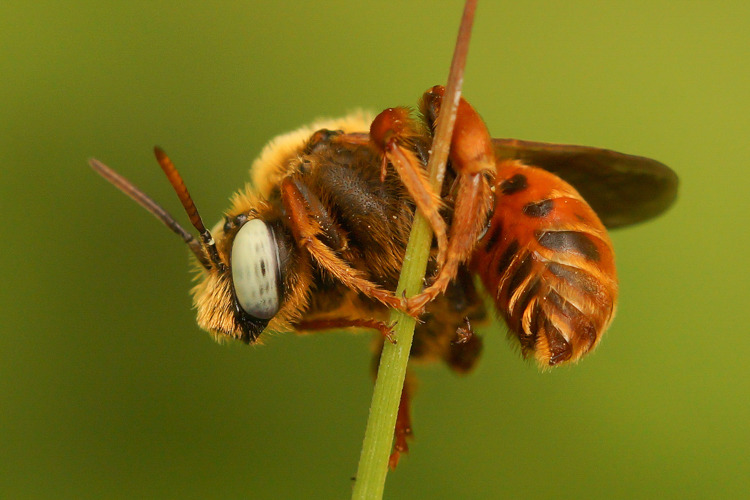Observation of the Week, 4/21/18

Our Observation of the Week is this Conops thick-headed fly, seen in Belgium by @henkwallays2!
A naturalist who was first interested in amphibians (especially salamanders), Henk Wallays has been photographing wildlife for a long time now - “Most [amphibian] images...date from before the digital age (like me ;-) and are on slide,” he says - and has recently become interested in macro photography. “I have also started to appreciate the nature from my neighbourhood and took up the idea of going for photographic inventories…mainly on the smaller animals. I am very keen on photographing solitary bees for the last 5 years now , but I tend to make shots of almost anything that passes in front of my lens. The purpose being to make sharp images depicting the animals with as much detail as possible.” Describing his macro photography as a “hobby that kind of went out of hand,” Henk always brings his camera and twin flash gear with him wherever he goes.
One place he tries to visit every year is the Viroin region of Belgium, “which is known for its rich biodiversity...There are so many different insect and plant species in the various nature reserves out there which I can not find elsewhere.” It was on a visit there in 2009 when he found the awesome Conops fly pictured above. “During this trip we actually found some new solitary bee species which I had not seen before and then there was this Conops,” he recalls. “Although we do from time to find Conops where I live, this animal just posed so nice that I had to make the shot.”
The beautiful, nectar-sipping adult form of the Conops fly belies its somewhat savage life cycle. Female Conops flies will often attack bees, especially bumblebees, in mid-air and spread open the segments of the bee’s abdomen, where they will deposit an egg. Once the egg hatches, the larva will feed on the hemolymph (blood) of the host before slowly devouring its internal organs and eventually killing the host. It will then pupate inside the dead bee and emerge in the spring.

Henk (who wanted to share his photo of a rare Epeoloides coecutiens bee rather than one of himself) found out about iNaturalist just over a week ago and is “currently busy uploading some of the older material.” He says that “although my experience with iNaturalist is short I kind of appreciate this platform a lot. Especially the fact that you are supported in having the right name tag on the animals or plants; either by (great) automated support (working well for plants specifically) and not the least also by other people helping out in those areas where I am not that familiar about (thanks for all of them who so far helped me out).”
“For now my image library is really too big and needs some clean up, it counts well over 150,000 shots on more than 3,000 species of animals, plants, [etc.],” says Henk. “And I hope to continue expanding it with more and better shots along the way.”
He’s passionate about contributing his sightings to different databases such as iNaturalist, AmphibiaWeb (where his old salamander photos have been uploaded), and Belgium’s own database. “So now in the field,” he explains, “you actually see me enter the observations twice on the cell phone, once for iNaturalist & once for Belgium.”
- by Tony Iwane
- Check out Henk’s photo gallery!
- Here are two videos of adult Conops at rest. Great looks at their halteres, which enable flies to be such awesome aerial acrobats.





Comentários
this seems to have posted twice?
(very neat, i had no idea that flies parasitize bees that way. And it looks like a hymenoptera too. So weird)
Adicionar um Comentário